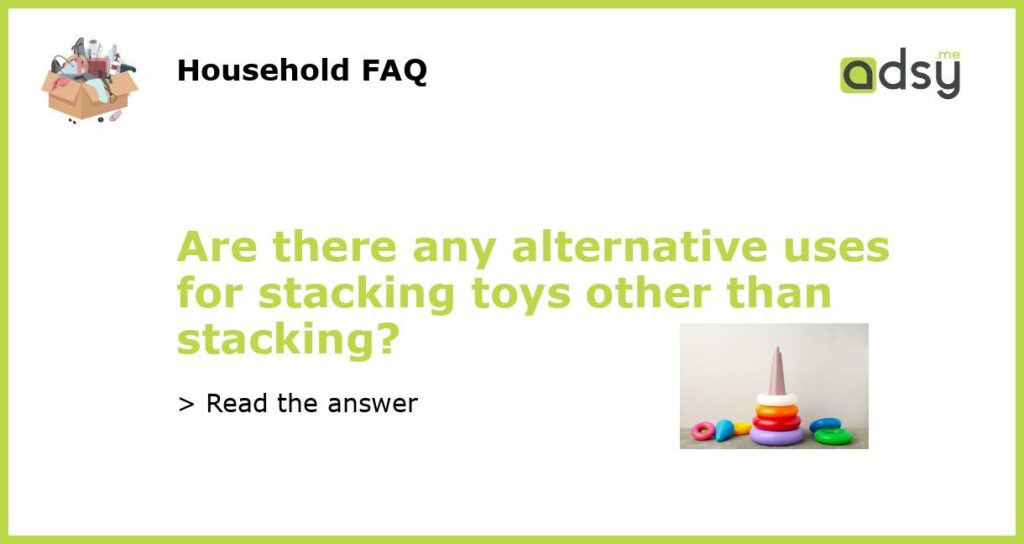Using Stacking Toys for Educational Purposes
Stacking toys are not just for stacking! These colorful, educational toys have alternative uses that can help children develop a range of skills beyond simple stacking. From problem-solving to fine motor skills, here are some alternative ways to use stacking toys to encourage learning and development.
Building Structures and Spatial Awareness
While stacking toys are traditionally used to build towers, they can also be used to construct more complex structures. Children can experiment with building bridges, houses, and other imaginative designs using stacking toys. This not only develops their spatial awareness but also encourages creativity and problem-solving skills. By manipulating different shapes and sizes, children learn how to balance and consider the stability of their structures.
Patterning and Sorting Activities
Stacking toys with different shapes, colors, and patterns can be used as a tool for patterning and sorting activities. Children can arrange the toys in different patterns or groups based on specific attributes, such as color or size. This helps them develop logical thinking skills and enhances their ability to recognize and create patterns. These activities can be made more challenging as children progress by introducing multiple attributes to sort or creating more complex patterns.
Fine Motor Skills and Hand-Eye Coordination
Stacking toys often require precise hand movements and coordination to successfully stack the pieces. This makes them ideal for developing fine motor skills and hand-eye coordination in young children. As they manipulate the different pieces, children improve their dexterity and learn to control their hand movements with precision. This can be particularly beneficial for children who struggle with fine motor skills, as stacking toys provide a fun and engaging way to practice these skills.
Counting and Math Skills
Stacking toys can also be used to introduce and reinforce basic math concepts, such as counting and number recognition. Parents or educators can encourage children to count the number of pieces they have stacked or ask them to find a specific number of pieces. This helps children develop early math skills and number sense. For older children, stacking toys with numbered pieces can be used for more advanced math activities, such as addition or subtraction.
Language and Social Skills
While playing with stacking toys, children can also develop their language and social skills. Parents or educators can engage children in conversation about the shapes, colors, or patterns of the stacking toys. This encourages language development and the ability to express thoughts and ideas. Stacking toys can also be used in group settings, promoting social interaction and cooperative play. Children can work together to build structures or solve problems, fostering teamwork and communication skills.






